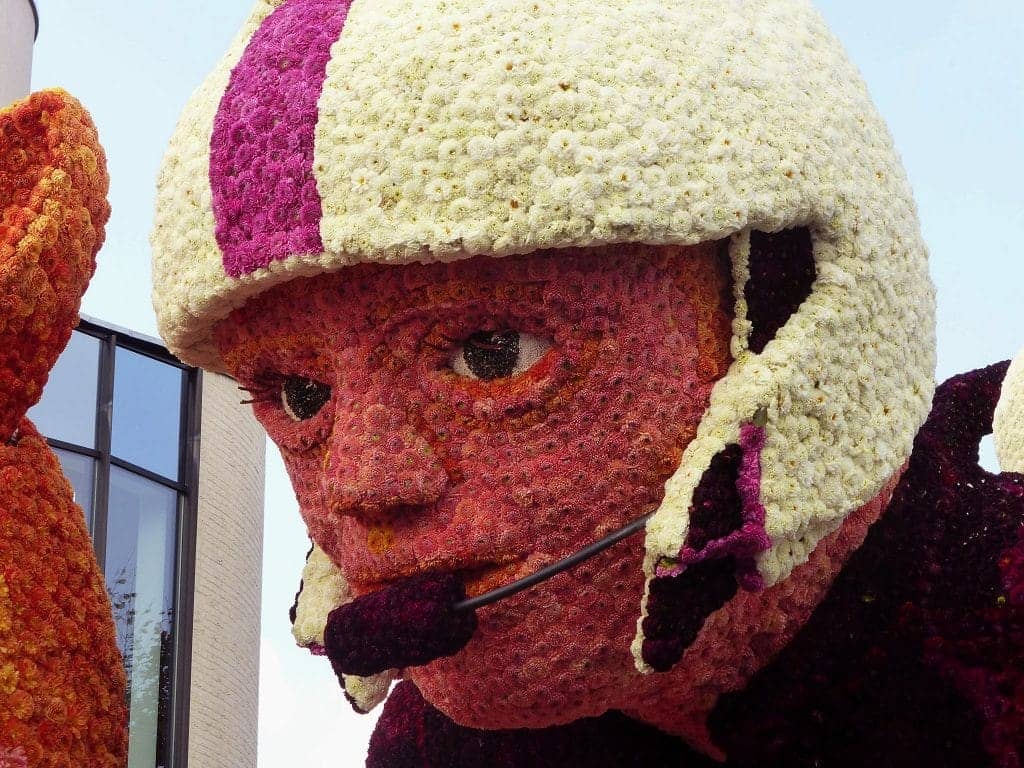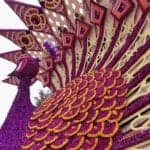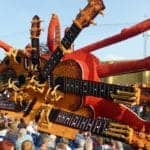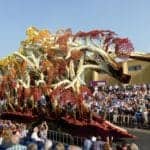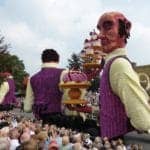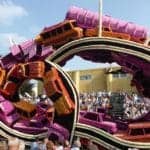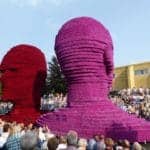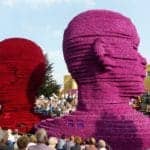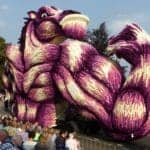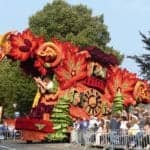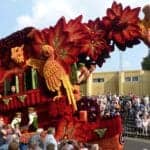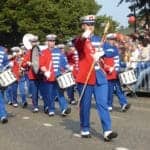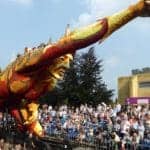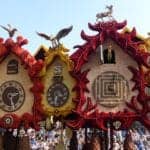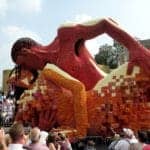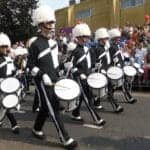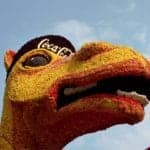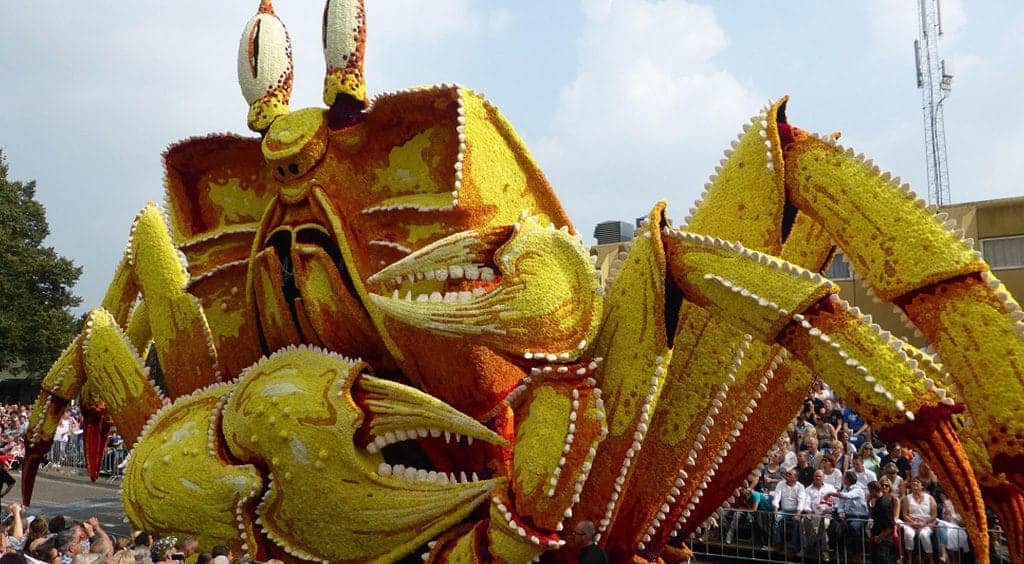Zundert Flower Parade, Bloemencorso Zundert
Although the Dutch have been famous for their tulips, they cultivate also the dahlias.
In Zundert, they use them to adorn the gigantic floats - it takes almost half a million of the heads to cover one! Every September they organize the largest flower parade in the world
If you are not an admirer of Vincent van Gogh, one of the most famous painters in history, you might not have any reason to visit his birthplace. Zundert is a small town in the south of the Netherlands, close to the Belgian border. It isn’t very pretty, it doesn’t offer a lot of artistic treasures, but every September attracts fifty thousand visitors from all over the world. The reason is the largest dahlias parade in the world, Bloemencorso.
Everything began in 1936 as the birthday celebration for Queen Wilhelmina. There was a simple parade with bicycles and farm carts decorated with flowers. It had immediate success, the Dutch loved the idea. After the Second World War, the number of floats grew, but no one expected Corso Zundert to become a real international event.
In the 1960s, dahlias fields grew like mushrooms after the rain. Nowadays, on 33 hectares of land around the town there are approximately 600 000 dahlias in 50 different species cultivated - and none of them goes to the shops, all of them are only for Bloemencorso. Other flora is not allowed.
The inhabitants of tulip country are competitive, so the size of the floats gradually increased. They became extremely big especially in the 1980s until the organizers finally had to set their maximum length to 19 meters, width to 4.5 meters and height to 9 meters. Originally, the whole piece was made of wood, but in the course of time, builders switched to polystyrene and iron. They wrap a metal frame in many layers of papier-mâché (a mixture of old newspapers and glue) that serves as a base for dahlias - then they attach each of them with a single nail. For one float, they need almost half a million of flower heads!
Every generation tried to contribute with something, to bring a technical innovation or improve a style of presentation. They added moving elements, co-starring dancers or performers and their own music, whose task is to underline the overall impression.
The floats are made by twenty different hamlets; each of them consists of hundreds of volunteers. The bloemencorso is a serious competition and so the preparations begin already in winter. The participating districts or villages design projects and prepare a flag. In April, they plant the seedlings of the colors they will need and create scale models of the future floats. In July, they present them at the exhibition open to the public - and nobody will miss the opportunity to see them. People can look, chat, badmouth and speculate who has the best chance to win.
In summer; they put up large temporary tents and build a basic construction. As the time goes, there is more and more work for other people. Winning the first prize is a huge challenge for the community, no wonder everyone wants to help. Men, women, children, old, young, laborers and managers. Three-month assembly is a very important social event; all these people meet after work and after a long evening working side by side they sing, eat or have a drink together. They remember the previous years and pass the experience from generation to generation.
At the end of August, the model is ready, but of course, the fresh flowers can only be applied on the floats at the last moment. The parade takes place on the first Sunday of September, so decorating starts usually on Thursday before and involves hundreds of volunteers who work day and night, if necessary.
On Sunday morning, when we arrived, Zundert's inhabitants had already put the chairs in front of their houses; some of them were already sitting outside, drinking and talking - the Dutch are easygoing people. We went to check the food stalls and tried some tidbits.
The Bloemencorso started at 1.30 pm. It is said to be the largest in the world, but I have been skeptical about these figures lately, because they write it almost about every event. In this case, however, it will probably be true.
The floats were giant! And amazing! Imagine The Sea - a group of stingrays on the moving arms of different length, gently sailing like in the waves. They were accompanied by music reminding me of documentary films about the underwater world. I heard a relaxing whale song... Maximum mark for artistic impression! The majestic Atlas 2.0, a modern version of the Greek God, was surrounded by the deep tones of the symphony. He slowly drove past us, on the back carrying fields, houses and windmills. A bombastic group of waiters held the trays of various goodies - roasted piglet, wine, cakes; the last one kept one hand behind his back, hiding a hefty bill. Each float was elaborated with a lot of attention to detail. The Cuckoo clock really worked, the hands rotated, the windows opened and closed and the cuckoos cuckooed like for their life, they made such a noise! Hat down in front of local creativity! I liked the gentle Peacock, the poetic Autumn walk and slowly moving yellow Crab. The organizers have limited the size of the flower statues, but for these colossuses it was still a challenge to make a sharp curve. The last one, the Censorship represented lovers in action, whose intimate parts were wittily censored - look at the picture.
The professional jury decided the winner was the Horsepower, a violet-white horse that snorted, neighed and expanded its muscles. The People's Choice award went to Atlas 2.0 - and those who didn’t win, wept with sorrow...
On Monday, the floats were on display for the public, on Tuesday completely disassembled - and on Wednesday, everybody dove head first into work on a new model. Next year it will definitely go better!

